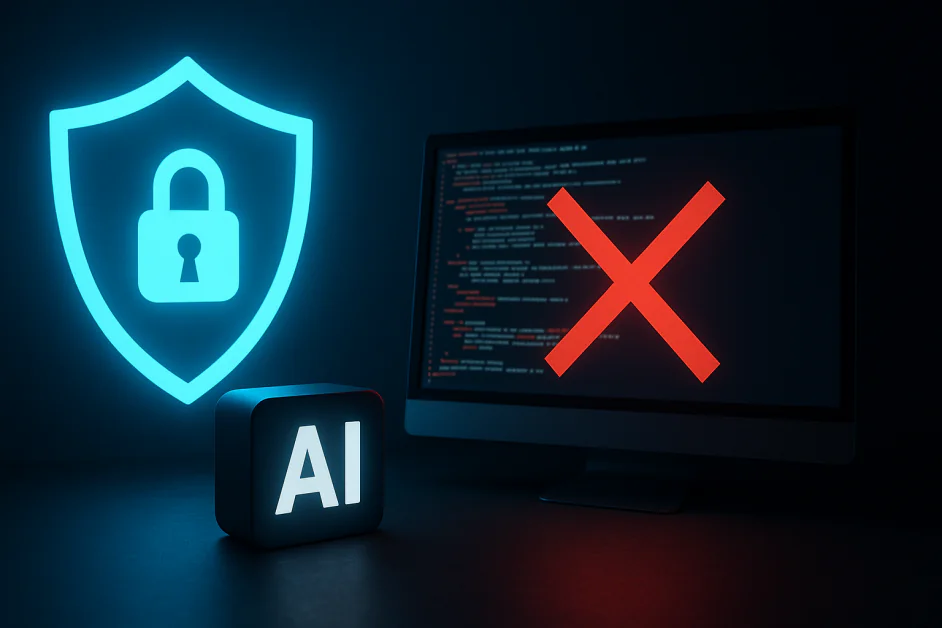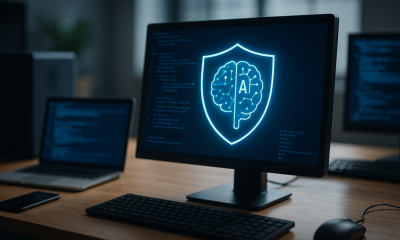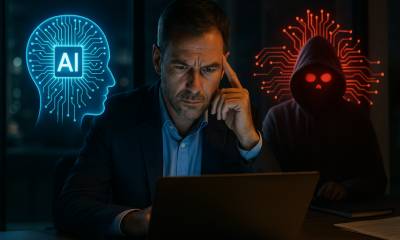Thought Leaders
When AI Gets It Wrong, So Do You

Why Highly Trained AI is Critical to Cyber Resilience
Artificial intelligence (AI) has become a foundational force in cybersecurity. From identifying anomalies to accelerating threat detection, its capacity to respond rapidly has made AI indispensable to modern security operations. But with great power comes serious responsibility.
As we increasingly rely on AI to safeguard critical applications, protect sensitive data, and inform security decisions, one truth is becoming impossible to ignore: poorly trained AI isn’t just a performance issue; it’s a threat vector.
Bias isn’t hypothetical in AI solutions. If it’s poorly trained or ad-hoc, it then becomes baked into the process. When that bias infiltrates cybersecurity tools, it doesn’t just skew analytics, it can create blind spots, erode trust, and weaken the very solutions designed to ensure resilience.
This is where highly trained AI shifts from a technical preference to a strategic business or boardroom discussion and requirement. For cybersecurity teams and the organizations they protect, this must be embedded at the core of the technical stack, not tacked on as an afterthought.
Understanding the Risk: Bias Undermines Resilience
Cybercriminals don’t always need to hack a machine—they can simply exploit gaps in detection or outdated tools. Sometimes, they just take advantage of how AI and data are built, especially when it’s trained with bad or limited data. If the AI tool or vendor you're using is only looking for threats it’s seen before, or assumes attacks always follow a certain pattern, it can miss new or different ones completely. That’s how cybercriminals slip through unnoticed.
Here’s how that happens:
- Limited data: If the AI is trained on a narrow set of examples, it may not recognize unusual behavior—especially if that behavior comes from underrepresented users or solutions.
- Skewed priorities: If the system is programmed to pay more attention to certain threats over others, it might ignore early signs of something new.
- Reinforcing mistakes: If bad assumptions keep getting fed back into the system, it just keeps making the same errors—missing threats or flooding teams with false alarms.
- Feedback loops driven by skewed alerting may reinforce false positives or miss threats entirely.
Highly Trained AI IS the Strategic Differentiator
Highly trained AI isn't just about performance or scale. It’s about building more resilient cybersecurity frameworks.
To make that happen, a few things are key:
- Clear decision-making: Infrastructure and security teams need to understand why something was flagged as a threat so they can trust it and act fast when it matters.
- Training AI: If AI only learns from one type of threat, it won’t spot others, especially changing or evolving attacks. It needs a wide range of examples, including polymorphic threats, to recognize what’s out there.
- Human oversight: Even the best AI needs a second set of eyes or a research lab. Having experts review and guide any sort of training or ML decision tree frameworks keeps the process sharp and reliable.
Data Integrity: The Foundation of Cyber Resilience
One of the most overlooked casualties of flawed AI in cyber resiliency is data integrity. Inconsistent or biased analytics can cause real damage, from incorrect threat prioritization to missed signals of compromise. Solutions that can validate the integrity of data—down to individual files or workloads—offer a unique differentiator in an environment where trust is currency.
Several solutions take a novel approach by inspecting backup, snapshot, and production data at a granular level. It uses machine learning to detect signs of corruption, manipulation, or anomalous behavior—not just based on what the last ransomware strain looked like, but based on evolving patterns. This behavior-based analysis, when highly trained, closes the gap between known and unknown threats.
At the core, it shouldn’t rely on a static ruleset or biased historical trends. Instead, it learns from data integrity violations across multiple environments over time, helping teams isolate issues before they escalate to minimize the impact of an attack. That’s where highly-trained AI shows real business value—it doesn’t just make tech smarter; it makes security stronger.
Building a Culture of Trustworthy AI in Cybersecurity
Trustworthy, highly trained AI isn’t a plug-in. It’s still something we need to learn about and it’s a major shift in our mindset— a true culture shift.
Cyber resilience and cybersecurity leaders should:
- Challenge and insist on AI explainability from vendors and internal developers.
- Educate their teams on the risks of poorly trained AI models and the importance of transparency.
- Track outcomes, not just outputs—if a system or process reduces alerts but misses evolving threats, it's not working.
As AI becomes further embedded into every layer of cyber defense, this cultural foundation will separate the prepared from the exposed.
Final Thought: Trustworthy AI Is the Foundation of Modern Cyber Resilience
Our future in fighting the bad actors isn’t about more alerts or heavier defenses—it’s about smarter, highly-trained AI and solutions that earn and maintain trust. These solutions don’t just react; they anticipate, adapt, and evolve with the threat landscape.
Organizations that embrace the importance of trusted data integrity won’t just survive the next attack; they’ll build lasting resilience. They’ll win the confidence of their teams, customers, and regulators in a world where trust is the ultimate currency.
The reality is simple: poorly trained AI increases risk. But investing in highly trained, trustworthy AI isn’t just good practice, it’s a competitive advantage and a leadership imperative.
If you’re serious about security, the question isn’t whether to invest in better AI—it’s how fast you can make it happen.












